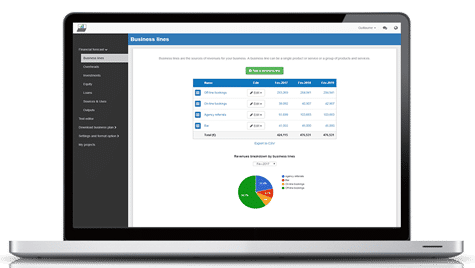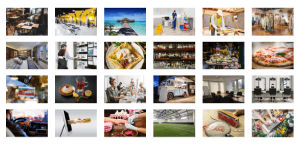How to create a financial forecast for a steakhouse?

Creating a financial forecast for your steakhouse, and ensuring it stays up to date, is the only way to maintain visibility on future cash flows.
This might sound complex, but with the right guidance and tools, creating an accurate financial forecast for your steakhouse is not that hard.
In this guide, we'll cover everything from the main goal of a financial projection, the data you need as input, to the tables that compose it, and the tools that can help you build a forecast efficiently.
Without further ado, let us begin!
Why create and maintain a financial forecast for a steakhouse?
The financial projections for your steakhouse act as a financial blueprint to guide its growth with confidence and ensure its long-term financial viability.
To create them, you will need to look at your business in detail - from sales to operating costs and investments - to assess how much profit it can generate in the years to come and what will be the associated cash flows.
During challenging market conditions, maintaining an up-to-date financial forecast enables early detection of potential financial shortfalls, allowing for timely adjustments or securing financing before facing a cash crisis.
Your steakhouse's financial forecast will also prove invaluable when seeking financing. Banks and investors will undoubtedly request a thorough examination of your financial figures, making precision and presentation essential.
Need a solid financial forecast?
The Business Plan Shop does the maths for you. Simply enter your revenues, costs and investments. Click save and our online tool builds a three-way forecast for you instantly.
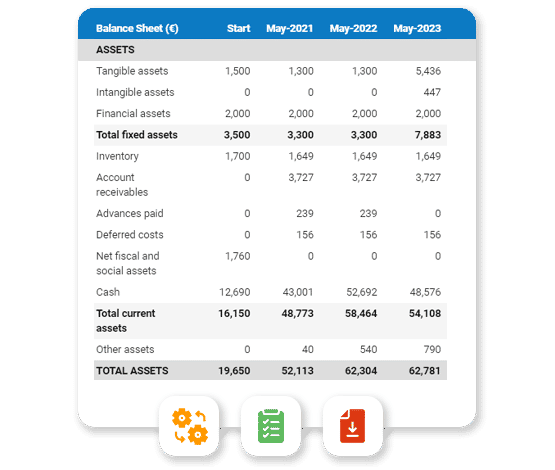
What information is needed to build a steakhouse financial forecast?
The quality of your inputs is key when it comes to financial modelling: no matter how good the model is, if your inputs are off, so will the forecast.
If you are building a financial plan to start a steakhouse, you will need to have done your market research and have a clear picture of your sales and marketing strategies so that you can project revenues with confidence.
You will also need to have a clear idea of what resources will be required to operate the steakhouse on a daily basis, and to have done your research with regard to the equipment needed to launch your venture (see further down this guide).
If you are creating a financial forecast of an existing steakhouse, things are usually simpler as you will be able to use your historical accounting data as a budgeting base, and complement that with your team’s view on what lies ahead for the years to come.
Let's now zoom in on what will go in your steakhouse's financial forecast.
The sales forecast for a steakhouse
The sales forecast, also called topline projection, is normally where you will start when building your steakhouse financial forecast.
Creating a coherent sales projection boils down to estimating two key drivers:
- The average price
- The number of monthly transactions
To do this, you will need to rely on historical data (for an existing business), market research data (for both new and existing steakhouses), and consider the elements below:
- Seasonal Demand: As a steakhouse owner, you know that the demand for steaks tends to increase during the summer months when people are more likely to grill outdoors. This can drive up your average price per meal as well as increase the number of monthly transactions.
- Beef Prices: Beef prices can fluctuate due to various factors such as weather conditions, disease outbreaks, and market demand. If the price of beef increases, you may need to adjust your prices accordingly, which can impact your average price per meal and potentially decrease the number of monthly transactions.
- Competition: The presence of other steakhouses in your local area can affect your business's average price and number of transactions. If you are in a highly competitive market, you may need to lower your prices or offer promotions to attract customers, which can decrease your average price per meal but potentially increase the number of monthly transactions.
- Economic Conditions: Economic factors such as inflation, unemployment, and consumer confidence can impact the average price and number of transactions at your steakhouse. During a recession, for example, people may be more hesitant to spend money on expensive meals, leading to a decrease in both your average price per meal and number of monthly transactions.
- Menu Changes: Introducing new menu items or changing prices can also affect your average price and number of transactions. For example, if you add higher-priced premium cuts of steak to your menu, your average price per meal may increase, but it could also lead to a decrease in the number of transactions if customers are not willing to pay the higher prices.
After the sales forecast comes the operating expenses budget, which we will now look into in more detail.
Need inspiration for your business plan?
The Business Plan Shop has dozens of business plan templates that you can use to get a clear idea of what a complete business plan looks like.
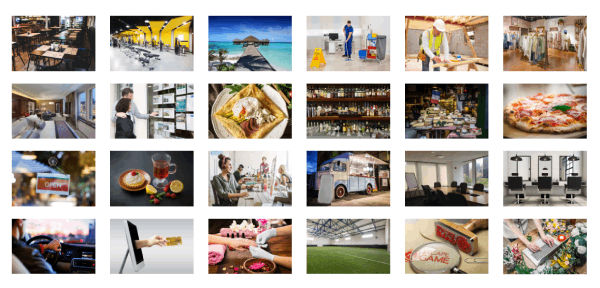
The operating expenses for a steakhouse
The next step is to estimate the costs you’ll have to incur to operate your steakhouse.
These will vary based on where your business is located, and its overall size (level of sales, personnel, etc.).
But your steakhouse's operating expenses should normally include the following items:
- Staff costs: This includes salaries, wages, and benefits for all of your employees, including chefs, servers, and kitchen staff.
- Food and beverage costs: This includes the cost of all the ingredients used in your dishes and drinks, as well as any supplies needed to prepare and serve them.
- Rent and utilities: This includes the cost of renting your restaurant space, as well as utilities such as electricity, gas, and water.
- Accountancy fees: You may need to hire an accountant to help you manage your finances, file taxes, and keep track of your expenses.
- Insurance costs: You should have insurance to cover your restaurant in case of any accidents, property damage, or liability claims.
- Software licenses: You may need to purchase software licenses for your restaurant management system, accounting software, or point-of-sale system.
- Marketing and advertising costs: It's important to promote your steakhouse to attract customers, so you may need to budget for things like social media ads, print ads, and promotions.
- Cleaning and maintenance costs: You want to make sure your restaurant is clean and well-maintained, so you may need to budget for cleaning supplies, repairs, and regular maintenance services.
- Training and development: It's important to invest in your staff and provide them with ongoing training and development opportunities to ensure high-quality service and consistent standards.
- Credit card processing fees: You will likely accept credit and debit cards as forms of payment, so you will need to budget for the fees associated with processing these transactions.
- Waste disposal and recycling: You will need to dispose of food waste and other trash, so you may need to budget for waste disposal and recycling services.
- Linen and laundry costs: If your restaurant uses tablecloths, napkins, and uniforms, you will need to budget for the cost of laundering and replacing these items.
- Liquor license fees: If you plan to serve alcohol at your steakhouse, you will need to obtain a liquor license and pay the associated fees.
- Banking fees: You may need to pay fees for things like wire transfers, cash deposits, and checking account maintenance.
- Taxes and licenses: You will need to pay various taxes and obtain necessary licenses to operate your steakhouse, such as a business license and health department permits.
This list is not exhaustive by any means, and will need to be tailored to your steakhouse's specific circumstances.
What investments are needed to start or grow a steakhouse?
Once you have an idea of how much sales you could achieve and what it will cost to run your steakhouse, it is time to look into the equipment required to launch or expand the activity.
For a steakhouse, capital expenditures and initial working capital items could include:
- Kitchen Equipment and Machinery: As a steakhouse owner, you will need to invest in high-quality kitchen equipment and machinery to ensure the efficient and smooth operation of your restaurant. This may include items such as grills, ovens, refrigerators, and other specialized equipment for preparing and cooking steaks.
- Furniture and Fixtures: The ambiance and atmosphere of a steakhouse are essential in creating a memorable dining experience for your customers. This is why investing in quality furniture and fixtures, such as comfortable seating, elegant lighting, and attractive decor, is crucial for the success of your restaurant.
- Building Renovations and Improvements: In order to maintain a modern and appealing appearance, you may need to periodically renovate and make improvements to your restaurant building. This could include updating the interior decor, replacing flooring, or making structural changes to accommodate new equipment or services.
- POS System: A reliable and efficient point-of-sale (POS) system is essential for managing orders, processing payments, and tracking inventory. Investing in a POS system specifically designed for the restaurant industry can help streamline your operations and improve customer service.
- Exterior Signage and Advertising: To attract potential customers and stand out from competitors, you may need to invest in exterior signage and advertising for your steakhouse. This could include a prominent outdoor sign, billboard advertising, or other marketing materials to promote your business.
Again, this list will need to be adjusted according to the specificities of your steakhouse.
Need a convincing business plan?
The Business Plan Shop makes it easy to create a financial forecast to assess the potential profitability of your projects, and write a business plan that’ll wow investors.
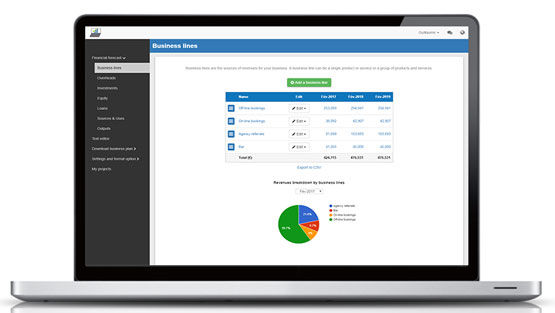
The financing plan of your steakhouse
The next step in the creation of your financial forecast for your steakhouse is to think about how you might finance your business.
You will have to assess how much capital will come from shareholders (equity) and how much can be secured through banks.
Bank loans will have to be modelled so that you can separate the interest expenses from the repayments of principal, and include all this data in your forecast.
Issuing share capital and obtaining a bank loan are two of the most common ways that entrepreneurs finance their businesses.
What tables compose the financial plan for a steakhouse?
Now let's have a look at the main output tables of your steakhouse's financial forecast.
The profit & loss forecast
The forecasted profit & loss statement will enable you to visualise your steakhouse's expected growth and profitability over the next three to five years.
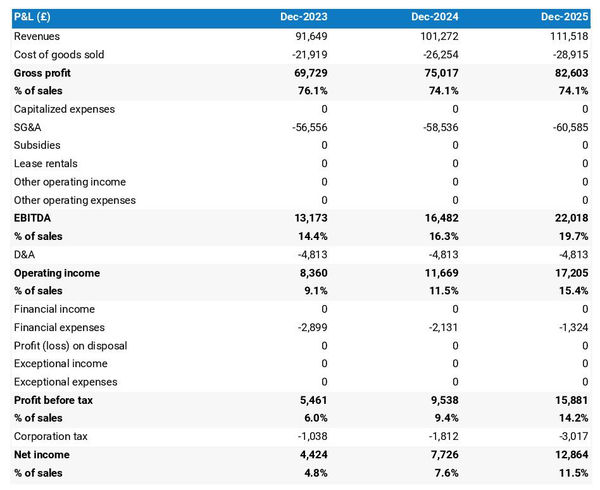
A financially viable P&L statement for a steakhouse should normally show:
- Sales growing above inflation
- Stable or expanding (ideally) profit margins
- A net profit
This will of course depend on the stage of your business: a new venture might be loss-making until it reaches its breakeven point in year 2 or 3, for example.
The projected balance sheet
Your steakhouse's projected balance sheet provides a snapshot of your business’s financial position at year-end.
It is composed of three types of elements: assets, liabilities and equity:
- Assets: represent what the business possesses including cash, equipment, and accounts receivable (money owed by clients).
- Liabilities: represent funds advanced to the business by lenders and other creditors. They include accounts payable (money owed to suppliers), taxes payable and loans from banks and financial institutions.
- Equity: is the combination of what has been invested by the business owners and the cumulative profits and losses generated by the business to date (which are called retained earnings). Equity is a proxy for the value of the owner's stake in the business.
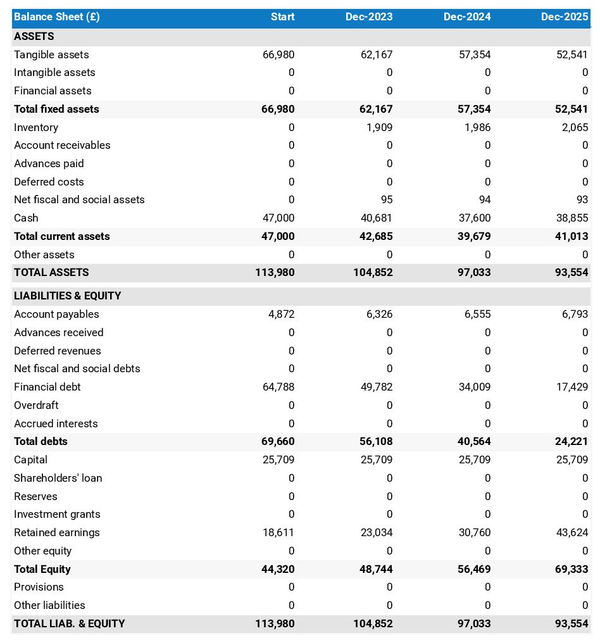
The cash flow forecast
Your steakhouse's cash flow forecast shows how much cash your business is expected to consume or generate in the years to come.
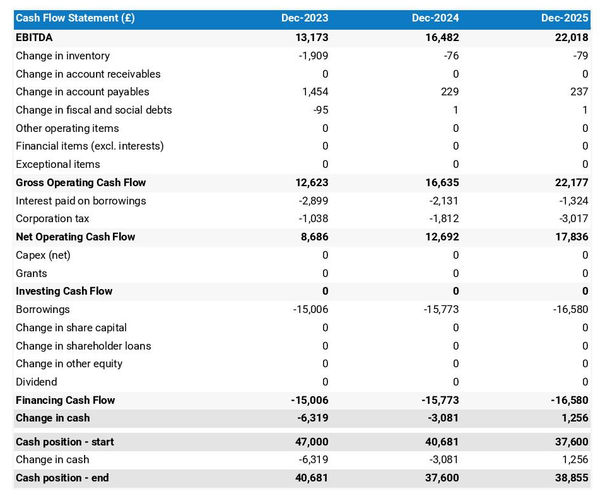
It is best practice to organise the cash flow forecast by nature to better explain where cash is used or generated by the steakhouse:
- Operating cash flow: shows how much cash is generated by the operating activities
- Investing cash flow: shows how much will be invested in capital expenditure to maintain or expand the business
- Financing cash flow: shows if the business is raising new capital or repaying financiers (debt repayment, dividends)
Keeping an eye on (and regularly updating) your steakhouse's cash flow forecast is key to ensuring that your business has sufficient liquidity to operate normally and to detect financing requirements as early as possible.
If you are trying to raise capital, you will normally be asked to provide a monthly cash flow forecast in your steakhouse's financial plan - so that banks or investors can assess seasonal variation and ensure your business is appropriately capitalised.
Need a solid financial forecast?
The Business Plan Shop does the maths for you. Simply enter your revenues, costs and investments. Click save and our online tool builds a three-way forecast for you instantly.

Which tool should you use to create your steakhouse's financial projections?
Building a steakhouse financial forecast is not difficult provided that you use the right tool for the job. Let’s see what options are available below.
Using online financial forecasting software to build your steakhouse's projections
The modern and easiest way is to use an online financial forecasting tool such as the one we offer at The Business Plan Shop.
There are several advantages to using specialised software:
- You can easily create your financial forecast by letting the software take care of the financial calculations for you without errors
- You have access to complete financial forecast templates
- You get a complete financial forecast ready to be sent to your bank or investors
- You can easily track your actual financial performance against your financial forecast, and recalibrate your forecast as the year goes by
- You can create scenarios to stress test your forecast's main assumptions
- You can easily update your forecast as time goes by to maintain visibility on future cash flows
- You have a friendly support team on standby to assist you when you are stuck
- It’s cost-efficient and much cheaper than using an accountant or consultant (see below)
If you are interested in this type of solution, you can try our projection software for free by signing up here.
Calling in a financial consultant or chartered accountant
Enlisting the help of a consultant or accountant is also a good way to obtain a professional steakhouse financial forecast.
The downside of this solution is its cost. From experience, obtaining a simple financial forecast over three years (including a balance sheet, income statement, and cash flow statement) is likely to cost a minimum of £700 or $1,000.
The indicative cost above, is for a small business, and a forecast is done as a one-shot exercise. Using a consultant or accountant to track your actuals vs. forecast and to keep your financial projections up to date on a monthly or quarterly basis will cost a lot more.
If you opt for this solution, make sure your accountant has in-depth knowledge of your industry, so that they may challenge your figures and offer insights (as opposed to just taking your assumptions at face value to create the forecast).
Why not use a spreadsheet such as Excel or Google Sheets to build your steakhouse's financial forecast?
You and your financial partners need numbers you can trust. Unless you have studied finance or accounting, creating a trustworthy and error-free steakhouse financial forecast on a spreadsheet is likely to prove challenging.
Financial modelling is very technical by nature and requires a solid grasp of accounting principles to be done without errors. This means that using spreadsheet software like Excel or Google Sheets to create accurate financial forecasts is out of reach for most business owners.
Creating forecasts in Excel is also inefficient nowadays:
- Software has advanced to the point where forecasting can be done much faster and more accurately than manually on a spreadsheet.
- With artificial intelligence, the software is capable of detecting mistakes and helping decision-making.
Spreadsheets are versatile tools but they are not tailor-made for reporting. Importing your steakhouse's accounting data in Excel to track actual vs. forecast is incredibly manual and tedious (and so is keeping forecasts up to date). It is much faster to use dedicated financial planning tools like The Business Plan Shop which are built specially for this.
Need a convincing business plan?
The Business Plan Shop makes it easy to create a financial forecast to assess the potential profitability of your projects, and write a business plan that’ll wow investors.

Use our financial projection templates for inspiration
The Business Plan Shop has dozens of financial forecast templates available.
Our examples contain a complete business plan with a financial forecast and a written presentation of the company, the team, the strategy, and the medium-term objectives.
Whether you are just starting out or already have your own steakhouse, looking at our financial forecast template is a good way to:
- Understand what a complete business plan should look like
- Understand how you should model financial items for your steakhouse
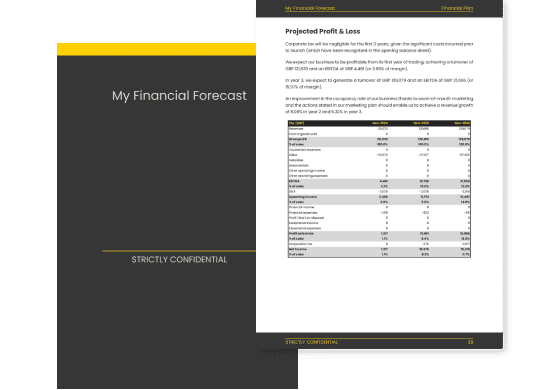
Takeaways
- Having a financial forecast enables you to visualise the expected growth, profitability, and cash generation for your business over the next three to five years.
- Tracking actuals vs. forecast and keeping your financial projections up-to-date is the only way to get a view on what your steakhouse future cash flows may look like.
- Using financial forecasting software is the mordern and easy way to create and maintain your forecasts.
This is the end of our guide on how to build the financial forecast for a steakhouse, we hope you found it useful. Don't hesitate to contact us if you want to share your feedback or have any questions.
Need inspiration for your business plan?
The Business Plan Shop has dozens of business plan templates that you can use to get a clear idea of what a complete business plan looks like.

Also on The Business Plan Shop
Know someone who owns or is thinking of starting a steakhouse? Share our forecasting guide with them!

